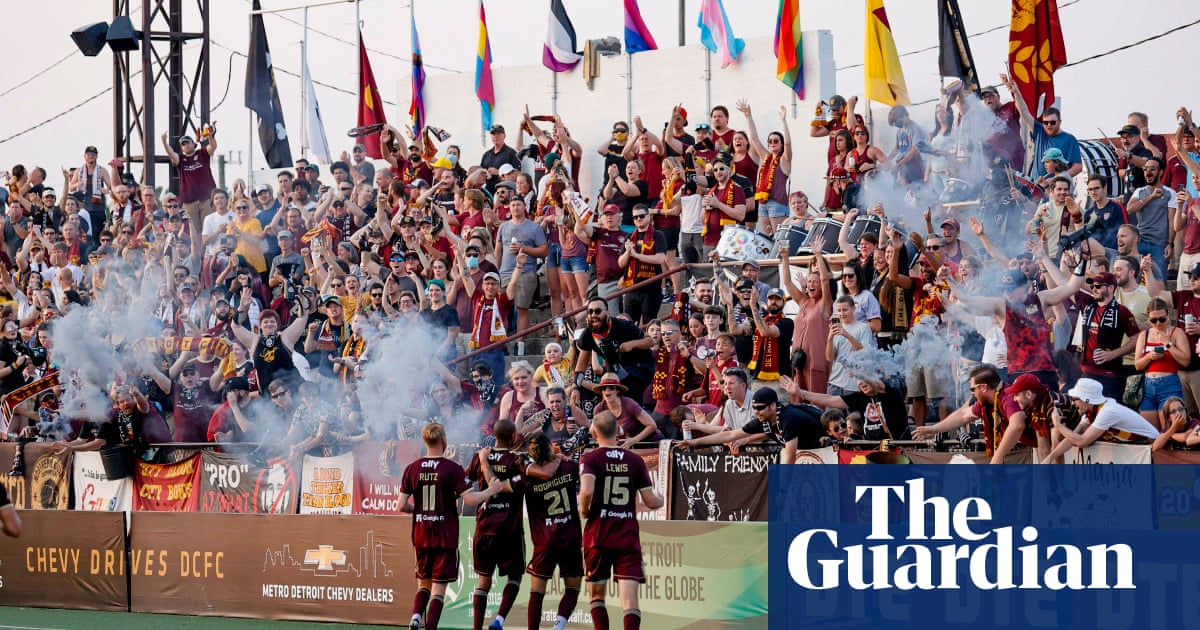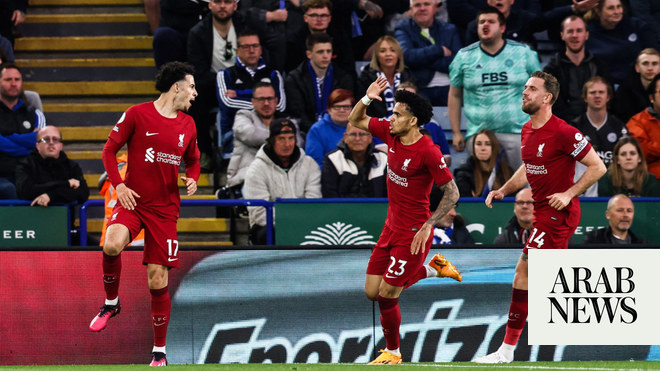
Not for the first time, American soccer is approaching a crossroads, and given the landscape in which this latest rumble in soccer’s turbulent history in the US will play out, it could be one of the most defining moments yet.
The organisation that runs professional leagues in the second and third tiers of soccer in the US, the United Soccer League (USL), could have a big role to play in shaping the future. With the new league season kicking off this month, it hopes to become a more visible and authentic alternative to Major League Soccer.
The arrival of Lionel Messi on American shores means there is more focus than ever before on the sport in the US – what it looks like and how it is played, governed and structured. But there are many other catalysts, including the World Cup in 2026, and its support acts the 2024 Copa América and the newly expanded 2025 Club World Cup.
Naturally, much of the initial attention will fall on MLS. But any lasting legacy could depend on how the benefits spill over into soccer outside MLS.
Dan Rutstein, president of USL Championship side Orange County SC, believes Messi will provide upside throughout US leagues.
“MLS will reap the biggest rewards but I think for clubs at all levels more people want to come to games, and you can bring your whole family to one of our games for less than the cost of parking at an LA Galaxy game,” says Rutstein. “America is a big country and there should be enough soccer to go around. The more people that like soccer, the more people that want to come to our games, the more people want to play soccer, and the more kids want to go into the system. I think it’s great for everybody.”
USL is not part of an open soccer pyramid. There is no promotion or relegation between its leagues – from the semi-professional regional League Two, to the professional League One and Championship – but its breadth and countrywide coverage can mean it feels more like soccer in other parts of the world.
It now has a chance to become an even bigger part of the game in the US. A new TV deal announced before the 2024 season is a big part of its increased availability and visibility. With the majority of MLS games behind the Apple TV+ paywall, USL could become the go-to league for TV viewers, especially in most of its local markets where it will be freely available on local, linear channels.
On Saturday, CBS aired Louisville City’s 5-3 over Indy Eleven. The game was the first-ever USL match broadcast on network TV, and is part of a broader deal to show more than 100 games on CBS platforms this season. The league could not have wished for a better showcase than a goal-fest nestled in a quiet period of the sports calendar.
“We want to be the most widely available soccer league in the United States,” says USL Championship president Jeremy Alumbaugh. “That means people being able to turn on the local television and watch their club play. The expansion of our relationship with ESPN, our new relationship with CBS, and having the availability for matches to be broadcast across all of our partners – to be accessible – that’s a big part of the growth of the game.
“I think the availability of the Bundesliga, La Liga, Serie A, the EFL and Premier League has had a huge impact on the growth of the game here in the States. Our ability to be widely available and not behind a paywall only is a massive part of our growth and something that we’re focused on.”
Some of the USL Championship is still behind a paywall on ESPN and CBS subscription channels, but even in those cases, it is alongside some of the European leagues Alumbaugh mentions, plus the Uefa Champions League and other sports. Being on the same channels to which soccer fans already subscribe to watch other leagues could also contribute to USL becoming the US soccer league of choice for TV viewers, whether in sports bars or at home.
This increased visibility is a core aim, but another theme that pops up when speaking to people involved with the league is authenticity.
Though there is a shared wider aim, teams have individual character and culture giving them the feel of clubs rather than franchises. Orange County SC, for example, opened up to fan ownership and investment last year and also has strategic partnerships with Rangers and Feyenoord to provide a potential pathway to Europe for young players coming through from youth or college soccer. One of their former players, Korede Osundina, is now on the books of the Eredivisie side.
Another prominent team in USL, Detroit City FC, boasts a lively fan culture, popularized in part by the supporters’ section’s unusual position on one side rather than behind a goal which means it is front and center on TV broadcasts. The team plays at the historic Keyworth Stadium in the Detroit enclave of Hamtramck – a densely populated area surrounded by houses. Again, this is unusual for an American team but is something else that contributes to a sense of authenticity and individuality.
“The whole system in America is not set up for clubs like us,” says Detroit City co-founder and CEO Sean Mann. “I think we’ve defied the odds every step of the way. There’s no clear promotion mechanism so we’ve had to jump between three different competing legal entities, to move to where we are.
“USL has been a great fit for us because it is professional in every facet of the structure and organization. We’ve been able to grow our reach, not just from a broadcast perspective, but we have this stability to do community endeavours that we’ve never done before, from events to regular programming to developing our youth system. All those things have grown exponentially in the last three years.”
In USL circles, Welcome to Wrexham and Ted Lasso have been as important to growing the game as the arrival of Messi, if not more so. They introduced ideas such as promotion and relegation and pyramid-wide cup competition to a wider US sports audience that had been used to closed league systems and the major league mentality of other sports.
The historical instability of the professional game in the country has always led to wariness towards open leagues with promotion and relegation, but as stability has slowly arrived in professional soccer in the US through MLS, especially in the last 20 years, it is increasingly favored by those outside the MLS bubble.
“We’ve been pretty vocal that we’re exploring what that could look like,” Alumbaugh says of its possible introduction in USL. “It’s a big task. It’s a big change for our leagues, our owners and our clubs. If we do it we need to be very calculated and strategic in how it gets put into play. We’re still doing that work. A lot of it happens behind the scenes, but we haven’t hidden from the fact that we think it could be something unique in the American landscape.”
Owners of USL teams will have a say in how things like this progress, and as a result, will have a big say in the future of US soccer. Introducing promotion and relegation at the professional level, even just within the closed entity of USL’s three divisions, would be a huge change.
“Our club are big proponents of it,” says Mann. “I think there’s generally a lot of interest and willingness to sort it out across the clubs in this league. And so there’s an ongoing conversation, I think we’re at a point of figuring out the pragmatics of it, but I think that is something we should aspire to.
“Soccer is growing in popularity in this country. The question is, is American soccer actually capturing that growth or is it that more and more people are tuning in to the Premier League, Serie A or even Liga MX? The metrics from broadcasts indicate it’s the latter. We have very sophisticated, knowledgable soccer fans in America, and I feel they’re gravitating towards the global product more than the American product. I think we shouldn’t ignore that.”
While there is plenty of optimism around the future of USL, there is pessimism around the future of the country’s national cup competition, the US Open Cup. MLS withdrew 18 of its 26 eligible teams from the tournament this season, and the future of the 113-year-old competition going into 2025 remains in the balance.
There is frustration within USL at the actions of MLS in the cup episode and its attitude towards US soccer as a whole.
“I don’t think our owners should have been put in a position where they had to make a choice,” says Alumbaugh on the decisions around the 2024 Open Cup. “It’s special. It’s unique. This tournament has been here for 100-plus years so I’m excited that all of our clubs have decided to participate. I’m not positive about what the future looks like, unfortunately, but it’s a competition that is a special part of the sport. It’s disappointing that some of that specialness is gone [this year].”
“USL teams beat MLS teams in the US Open Cup every year, and that’s part of the reason why the MLS teams don’t want to play it any more,” says Rutstein, while Mann adds: “MLS interests are not inherently the interests of the sport in this country. MLS, I think is very keen on owning the sport. With those two things together, I don’t know if it bodes well for the direction of the sport in this country.”
For the USL Championship itself, the positives far outweigh the negatives. The character of its clubs and a chance to feature them via a TV deal that expands its reach exponentially has led to excitement about the new season. That the owners are curiously considering promotion and relegation, and fully behind the US Open Cup, could also work in their favour in the eyes of many soccer fans.
It is still experiencing growing pains, but in a pivotal three years for US soccer as the global game arrives on its shores, USL appears to be the US professional soccer league most in tune with that game as the world knows it, while at the same time remaining distinctly American.












